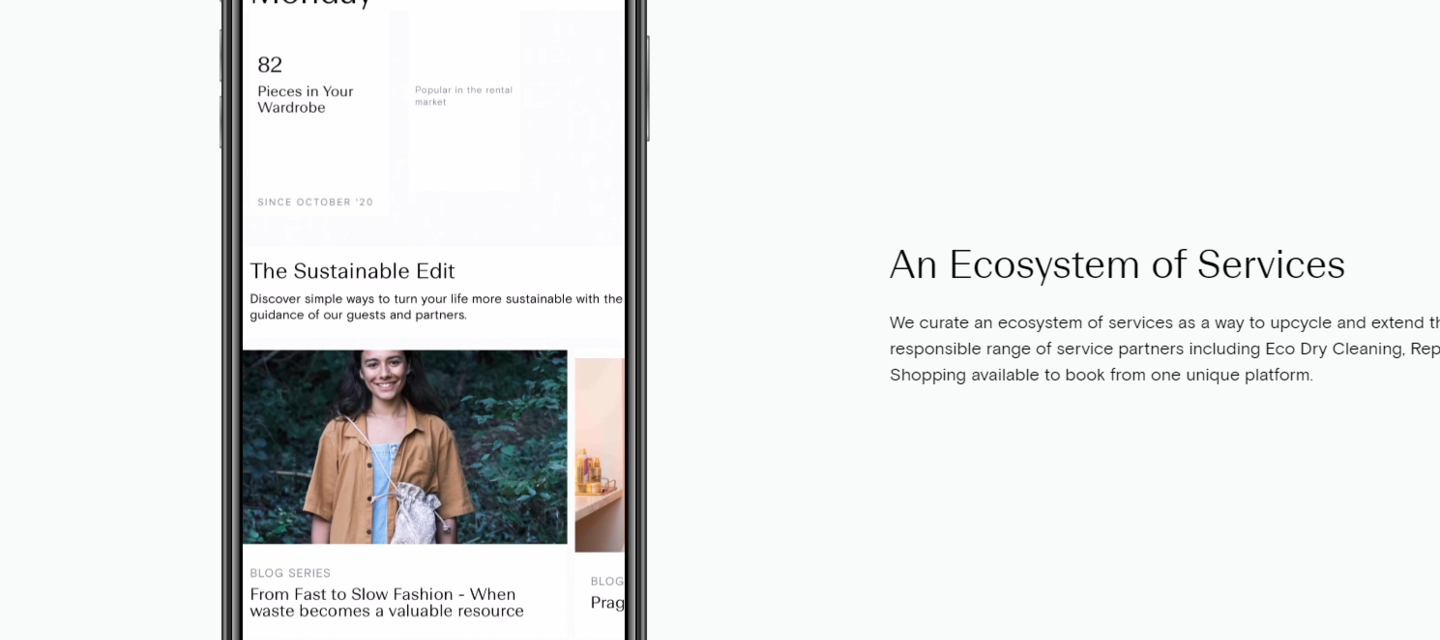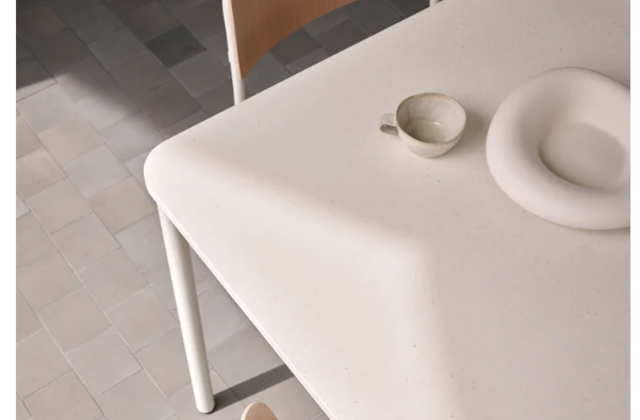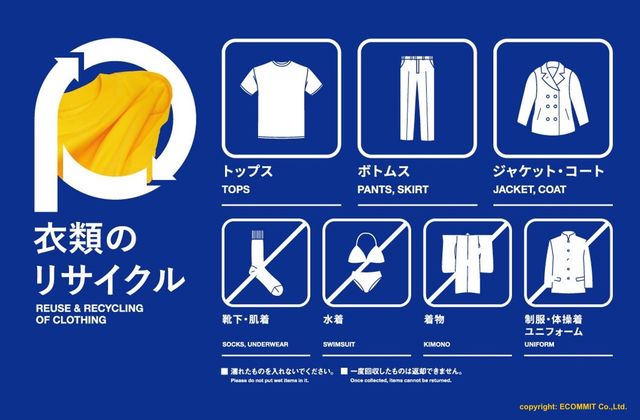Fashion, clothing and textiles, Digital Platforms
What is it? Save Your Wardrobe is an AI-powered wardrobe management app. Users catalogue their existing wardrobe contents and receive styling suggestions based on what they have to minimise the need for new purchases. The app also connects to service partners that offer laundry, repair or tailoring services.
Why is this important? Clothing is heavily underutilized in the mainstream fast fashion system and the number of wears of a garment has decreased by 36% in 15 years (Ellen MacArthur, 2017). Estimates suggest that 65% of women and 44% of men have clothing in their wardrobe they have not worn once (Save Your Wardrobe, 2020). Actively wearing an item for nine additional months can help to reduce the environmental impact of clothes by 20 to 30% (Save Your Wardrobe, 2022a).
Main resource strategy: Narrowing the loop by enabling higher use rates of items through presenting members their existing wardrobe contents and suggesting styling combinations.
Other resource strategies: Slowing the loop by connecting users with services that extend clothing lifetimes, such as repair or tailoring.
Business model aspects:
- Value Proposition: Save Your Wardrobe offer an Artificial Intelligence-powered app for wardrobe management. The aim is for customers to rediscover the clothing they already own and wear their items more frequently rather than buying new (Save Your Wardrobe, 2022a).
- Value Creation & Delivery: Customers can use the app to manage their wardrobe, cataloguing items and receiving styling suggestions. Save Your Wardrobe also provides a platform for care services, such as professional laundry, alteration or repair (Save Your Wardrobe, 2022b). Additionally, they have partnered with Good on You to offer responsible shopping suggestions (Save Your Wardrobe, 2022d).
- Value Capture: Through the freely available Save Your Wardrobe app, clothing can be worn more frequently and repair and proper product care are encouraged. A premium version with additional features is under development by the company (Save Your Wardrobe, 2022b).
Strategies for degrowth/ sufficiency (based on sufficiency strategies from Niessen & Bocken, 2021):
- Awareness-raising & Demand reduction service: By showing members the existing clothing in their wardrobes, they help them remember what they own. The AI-powered wardrobe management app catalogues existing clothing and helps style them anew to avoid the need for new purchases, reducing demand for new consumption. Save Your Wardrobe also raises awareness about the impacts of fast fashion, for instance through their blog.
- Exchange platform: The Save Your Wardrobe app works with partner businesses to offer a platform for their services, for instance tailoring or professional laundering, to extend product lifetimes.
- Support for repair: In their partnerships with Rebirth and Zalando, Save Your Wardrobe provide repair instructions to customers to support them repairing items themselves (Save Your Wardrobe, 2021, 2022a).
Business model experimentation practices: Save Your Wardrobe have partnered with Zalando to connect customers to product aftercare services in the German market (Save Your Wardrobe, 2021). Starting in 2021, the two companies trialled a booking service system where Zalando customers could book repair, alteration or cleaning services. The service is initially only available in Berlin and Dusseldorf (Save Your Wardrobe, 2021).
Sustainability outcomes: Save Your Wardrobe estimate that, since the app’s launch in 2017, their services have helped to avoid 9500kg of CO2 emissions, and to recycle instead of landfill 3223 tonnes of waste (Save Your Wardrobe, 2022c).
Sources:
Save Your Wardrobe (2022b). FAQs. Accessed 8 February 2022 at: https://www.saveyourwardrobe.com/faq/
***
About project Circular X
Project Circular X is about ‘Experimentation with Circular Service Business Models’. It is an ambitious research project funded by the European Research Council (ERC) which supports top researchers from anywhere in the world. Project CIRCULAR X runs from 2020-2025. The project is led by Principal Investigator (PI) Prof Dr Nancy Bocken, who is joined by a multidisciplinary team of researchers at Maastricht Sustainability Institute (MSI), Maastricht School of Business and Economics, Maastricht University. The project cooperates with businesses who want to innovate towards the circular economy.
Project Circular X addresses a new and urgent issue: experimentation with circular service business models (CSBMs). Examples of such new business models include companies shifting from selling products to selling services and introducing lifelong warrantees to extend product lifetimes. However, CSBMs are far from mainstream and research focused on experimentation is little understood. The research aims to conduct interdisciplinary research with 4 objectives:
- Advancing understanding of CSBMs; their emergence and impacts
- Advancing knowledge on CSBM experimentation
- Developing CSBM experimentation tools
- Designing and deploying CSBM experimentation labs
Funding source
This project has received funding from the European Research Council (ERC) under the European Union’s Horizon 2020 research and innovation programme, grant agreement No. 850159.
Using this information
When you cite this publication, please use the following source:
Circular X. (2022) Case study: Save Your Wardrobe - Digitising wardrobes for sustainable living. Accessed from www.circularx.eu



